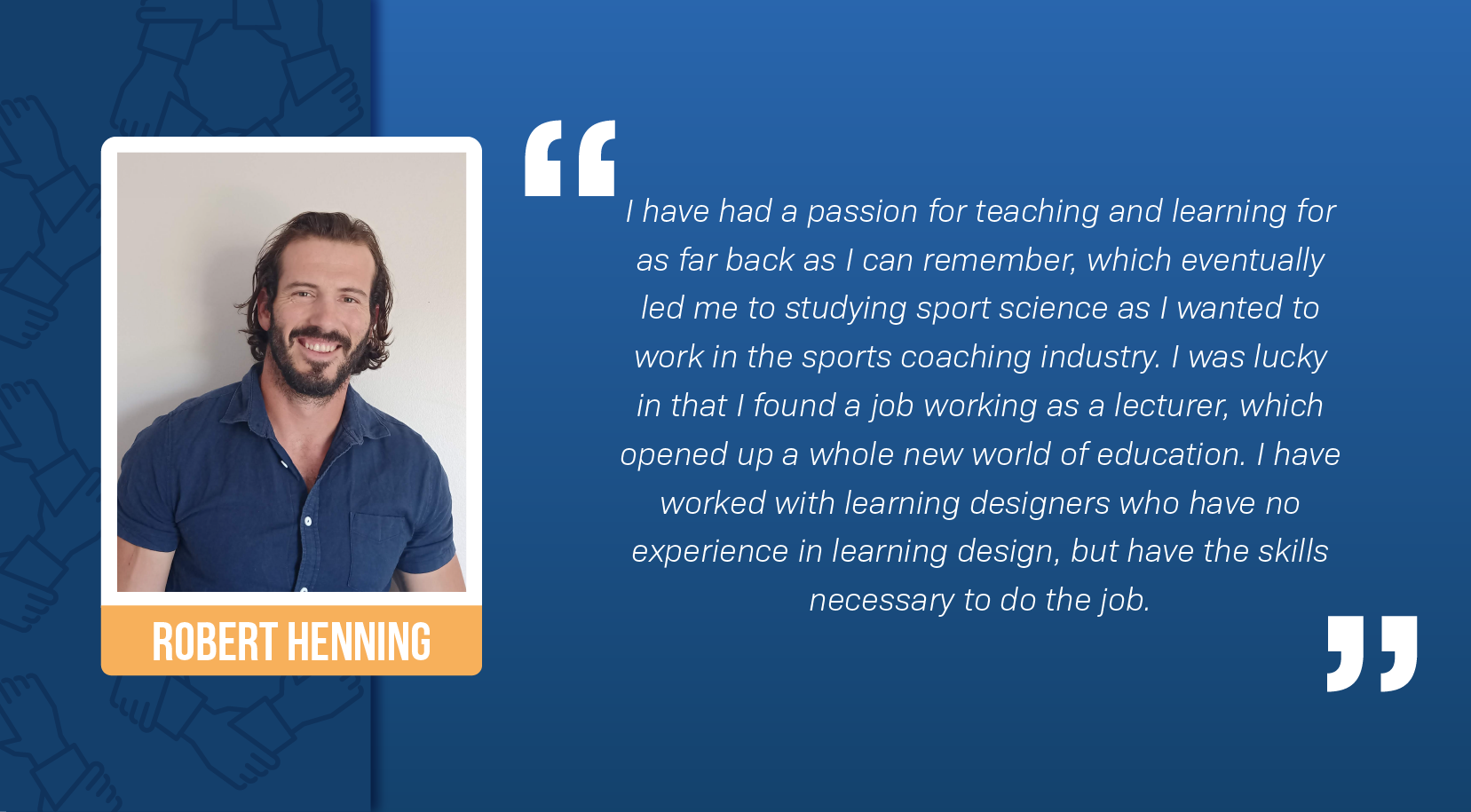
Meet the RDEISE Learning Design Team
For the last few months, we’ve been highlighting different areas of the Racial Diversity, Equity, and Inclusion in Science Education project (RDEISE). On the blog, we have covered the project's inception, introduced our graduate fellows as well as the steering committee, and more. This month, we go behind the scenes of the RDEISE project. Three of our learning designers—Aayshah Jaffer, Kashief Gamieldien, and Robert Henning—give us an exclusive look into the learning design process. We also discuss how deeply DEI is embedded in the project, and get some first-hand tips for anyone interested in a career in learning design.
Q: How do you define learning design?
Robert Henning: I define learning design as the thread that weaves together the entire learning process, from inception to completion. This involves wearing various hats, as curriculum designers, script writers, editors, and pedagogical experts, all while keeping the end users—learners and educators—in mind.

Kashief Gamieldien: My definition of learning design draws parallels with architecture. As a building should speak to its context and usage, the learning designer looks to the context shaping the learner’s experience to find the best fit.

Aayshah Jaffer: To me, learning design is the invisible part of any learning experience. At its crux, our job is to map out the learning journey from beginning to end. When it’s designed well, the learning journey is a natural progression - at its end, the learner should be able to achieve the outcomes set out by an educator or facilitator. In my opinion, one of the most important considerations in learning design is how to keep the learner engaged and interested. This means looking at content and deciding what the best format for presenting it would be.

Q: Can you give a brief overview of your role in the RDEISE project?
Kashief Gamieldien: My role is assessing content developed by the RDEISE graduate fellows to turn it into bite-sized learning experiences: text, videos, infographics, and animations. This involves working with writers, editors, and subject matter experts to communicate key ideas in antiracist theory and scholarship in an accessible and easily understandable way. I also work with graphic and motion designers to ensure the best visual treatment for concepts.
Q: How would you describe the role learning design plays in the RDEISE project?
Aayshah Jaffer: The way I see it, a learning designer’s top priority is to ensure the learner has everything they need to meet learning objectives. At the moment, this means looking at content and proposing the type of assets that best suit it. The team also has a hand in every stage of asset development, to ensure that the end product provides a full learning journey for each learner.
Robert Henning: We focus on ensuring that the learning experience is one that not only meets the criteria but also provides effective learning of the topic. This is done through working the initial content into a storyboard document, creating effective learning experiences through tools such as images, infographics, and other visuals that bring the content to life.
Q: How central is Diversity, Equity, and Inclusion (DEI) to the learning design process in this project?
Kashief Gamieldien: DEI is embedded in the RDEISE project team and learning design process. We have assembled a team of diverse people who value the purpose and potential impact of the RDEISE project. More broadly, the RDEISE graduate fellows and faculty steering committee provide critical guidance and oversight on a periodic basis. This ensures that project processes are geared toward not only achieving a project of integrity, but that the operational framework that delivers the project is also based on integrity.
Aayshah Jaffer: I’d say it plays a pretty central role…we are constantly learning from one another’s perspectives. We all believe in the messaging behind this project, especially as South Africans living in the aftermath of apartheid.
Q: What about the RDEISE project drew you in or inspires you?
Aayshah Jaffer: The idea that we would be facilitating a new perspective on the issues of racism as a public health crisis, and concentrating on inclusive teaching practices interested me. Having the opportunity to read first-hand narratives in the form of personal stories from the graduate fellows has been eye-opening. It’s helped me think about how to design educational content in a more inclusive way.
Q: What advice would you give to people who have an interest in learning design?
Robert Henning: If you would like to begin your journey in learning design, my advice would be to learn as much as possible about the educational and curriculum design approach. Read books, attend talks and seminars, take short courses, and try your hand at developing your own small courses and curricula. You don’t necessarily need to know how to build a course online, but rather the philosophical and pedagogical approach in educational design.
Subscribe to our newsletter for future blog posts, in which we’ll profile other teams working behind the scenes of the Racial Diversity, Equity and Inclusion in Science Education project.
.svg)

.svg)



